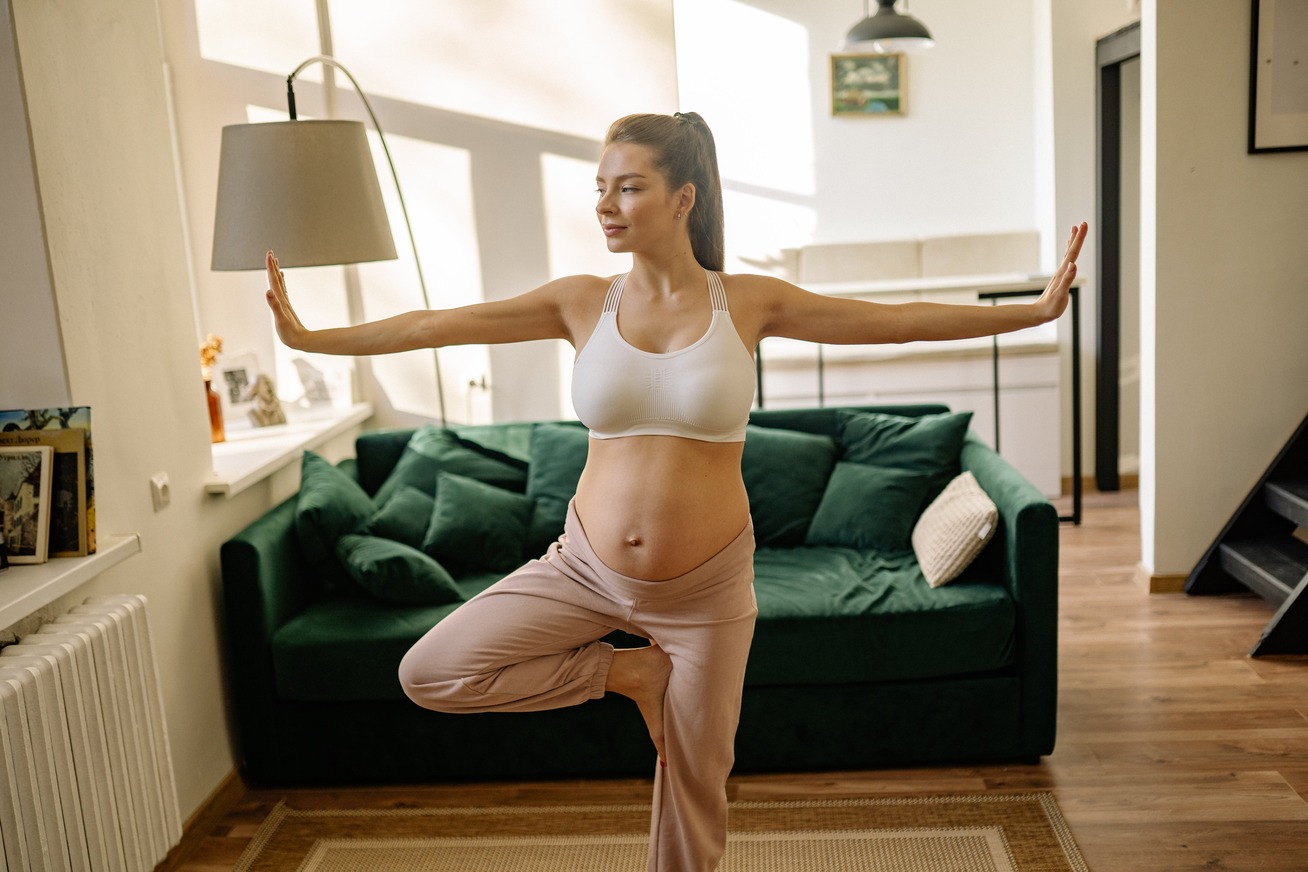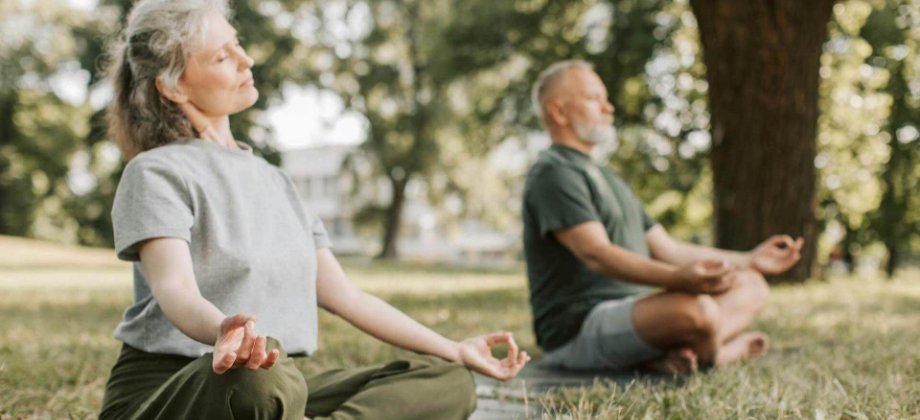
Prenatal Yoga 101: Tips, Modifications & Considerations For Teaching Pregnant Yogis
If you're teaching drop-in yoga classes, it's inevitable that sooner or later, you'll have a pregnant student. That's why, although prenatal yoga is not compulsory in a 200-hour yoga teacher training, I highly recommend EVERY yoga teacher study it. If you don't, believe me when I say you'll kick yourself when a pregnant yogi turns up, and you don't know how to accommodate her!
The good news is that you don't have to pay hundreds of dollars or spend a week doing a prenatal yoga CE course - unless you want to, of course!If prenatal yoga is not a niche you want to specialize in, you can familiarize yourself with yoga for pregnancy through self-study instead, starting with this guide!
The 3 Questions You Need To Ask Your Pregnant Student
When a pregnant woman walks into your class, there's no need to swap your planned Vinyasa flow for a gentle restorative session instead. In fact, you don't need to change your class plan at all. You can continue to teach the session as planned while giving personalized attention and modifications to your pregnant yogi.
But before you do that, there are a few questions you'll need to ask the mom-to-be:
- How long have they been practicing yoga for? - Their current yoga level will determine the poses they can do and the ones they should omit.
- What trimester are they in? - This is important to know, as the modifications you offer will depend on how far along they are.
- Do they have any medical issues? - For example, high blood pressure is common during pregnancy, which also determines which poses they should avoid.
Poses To Avoid Or Modify
So, what poses are safe for pregnant yogis, and which should be omitted? Let's briefly discuss each asana group that may be cause for concern.
Twists
Deep closed twists can strain the abdomen and uterus, potentially reducing blood flow to the baby. Therefore, avoid the following:
- Seated spinal twist
- Revolved triangle
- Revolved Lunge
- Twisted chair pose
Instead, give them gentle twists above the waistline, focusing on the upper back and shoulders, such as the supine twist.

Backbends
Like with twists, avoid teaching deep backbends to any pregnant students, such as camel or wheel pose. Deep backbends can strain the spine and abdomen, potentially causing a condition known as cause diastasis recti. Instead, opt for gentle backbends focusing on opening the chest rather than compressing the lower back. Bridge, cat-cow, and sphinx pose are safe choices.
Prone poses
Some prone poses put direct pressure on the abdomen, which can cause discomfort and potentially affect the baby. Avoid bow pose and locust pose. Cobra and sphinx pose are fine. But cue your pregnant student to ground through the pubic bone rather than the belly and lengthen through the lower back.
Core work
The boat pose is one asana most pregnant yogis won't feel sad about skipping! Pregnant women should avoid postures that involve flexing or crunching the abdominals, especially during the first trimester.
Inversions
If your yogi is new to yoga, ensure they skip any inversions you cue to the rest of the class, except the downward dog. If you teach shoulder stand or headstand, your pregnant yogi can do legs up the wall pose as a safer, more gentle alternative. If your student is experienced with a strong inversion practice, they can continue practicing them if they wish.
Supine poses
Once a woman reaches week 20 in their pregnancy, lying on her back for extended periods may lead to decreased oxygen to the baby. Therefore, if your yogi is in the third trimester, keep supine poses short to minimize the amount of time she spends on her back. In addition, modify the savasana pose so that she lays on her side (with a bolster in between their legs) instead of on her back.
Should you give adjustments to a pregnant student?
When teaching a pregnant yogi, do not adjust her as you would to the rest of your students. With pregnant students, your focus should NOT be on challenging them to go deeper into poses but ensuring they are comfortable.
Rather than adjustments, you'll need to help them modify the poses, often with the support of props.
Other Safety Considerations
Here are some other essential things you should note when teaching yoga to pregnant women.
Exercise caution in hip openers
During pregnancy, the tissues around the pelvis soften and stretch to prepare for birth, making the mum-to-be more flexible than normal. However, her pain threshold also increases to prepare for giving birth, which means she could unknowingly overstretch.
To prevent this, ensure your pregnant yogi doesn't go too deep in a hip-opening pose, for example:
- Place blocks under her knees in Baddha Konasana
- Instruct her to take a shorter stance in lunges and warrior poses
- Don't have her holding standing positions for too long
- Have them open their legs in forward folds
As your yogi's belly grows, she must make space whenever folding forward. Therefore, if you are teaching the class Paschimottanasana, have your pregnant student do a wide-leg seated fold instead. Likewise, cue her to open her legs slightly wider than hip-distance in Uttanasana.
Encourage them to slow down
Changes in blood pressure are common during pregnancy. So, to avoid dizziness, tell your pregnant yogi to transition between poses slower than usual. This is particularly important when transitioning from standing forward fold to Tadasana. In sun salutations, rather than have them sweep their arms up as they rise, tell them to roll up with the arms by their sides.
Recommend more suitable yoga styles (if needed)
Finally, while yoga can be highly beneficial for pregnant women, they should avoid certain yoga styles. For example, pregnant women should avoid Hot yoga because there is an increased risk of neural tube defects and other malformations when unborn babies are exposed to excessive heat.
Moreover, if the mom-to-be is new to yoga, they should avoid fast-paced, vigorous styles, including Ashtanga and Power yoga. If they already have an established practice in these styles, they can continue to practice, providing they make the necessary modifications.
Of course, prenatal yoga classes are the best option for pregnant women. But hatha and restorative yoga are other safe and gentle alternatives that, as the teacher, you can easily adjust.
Final thoughts
I hope this guide helps you feel more confident and knowledgeable should a pregnant student drop into one of your classes. However, this information only scratches the surface. There are some fantastic books that will further equip you, such as Yoga for Pregnancy, Birth, and Beyond by Francoise Barbira Freedman, which breaks down the necessary modifications for each trimester.






